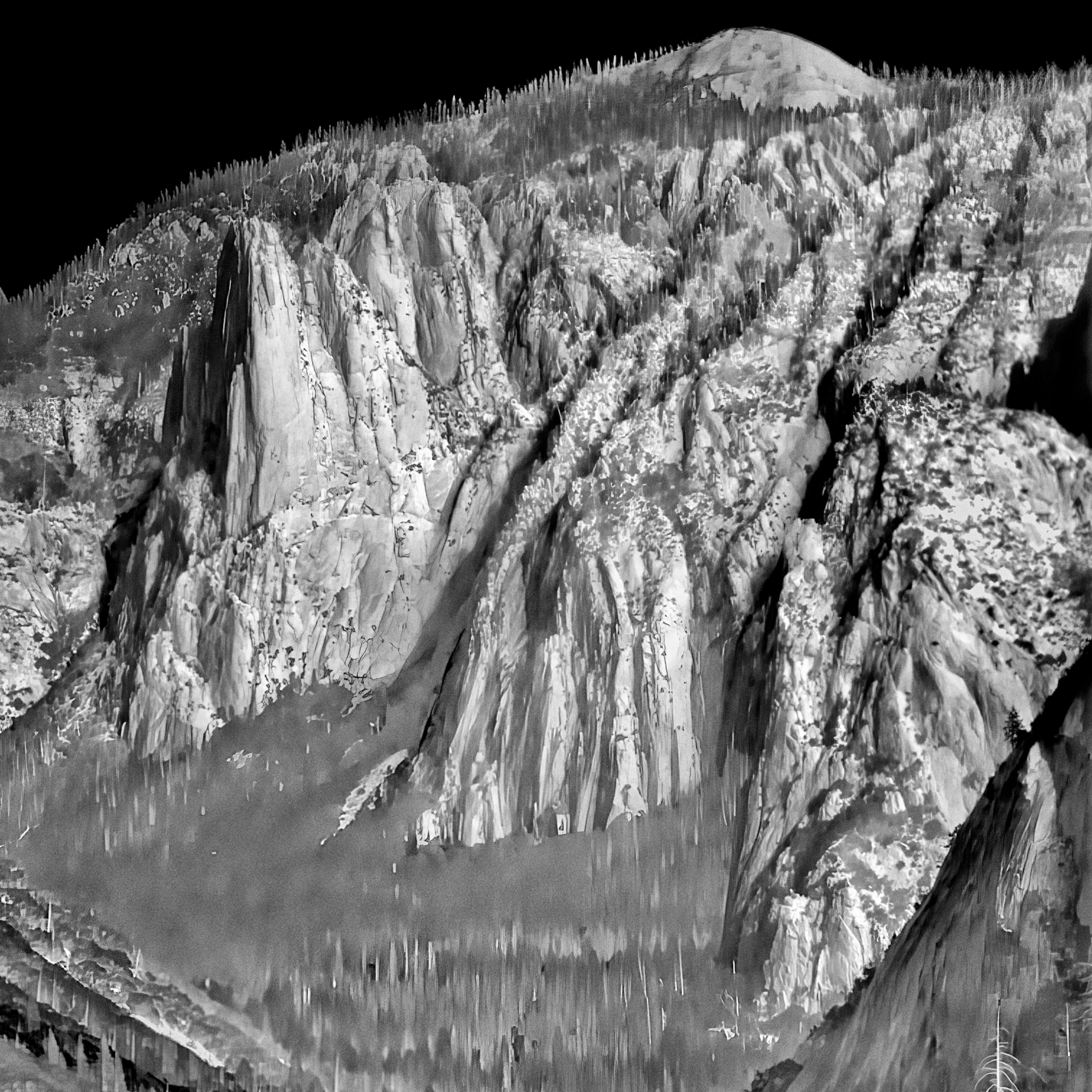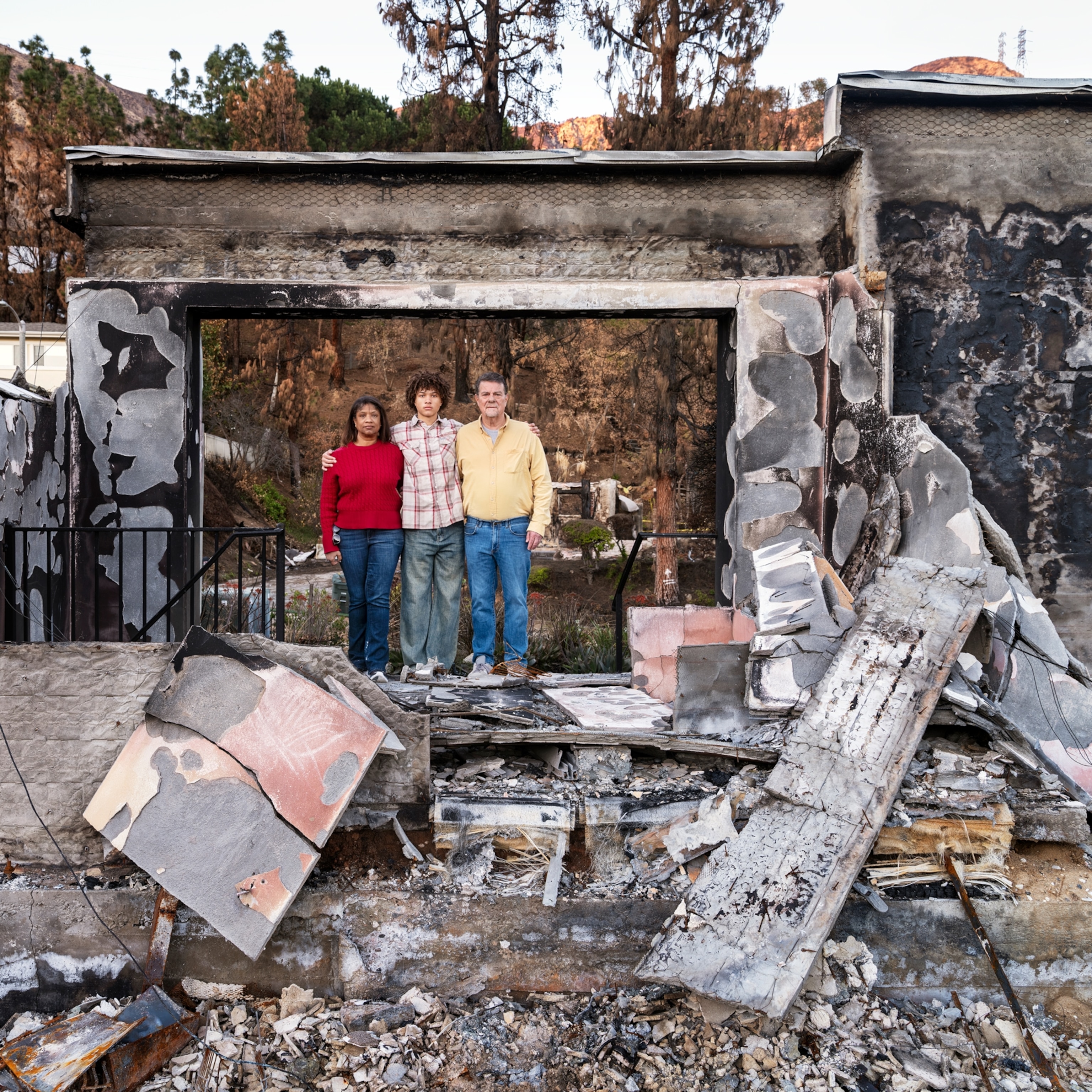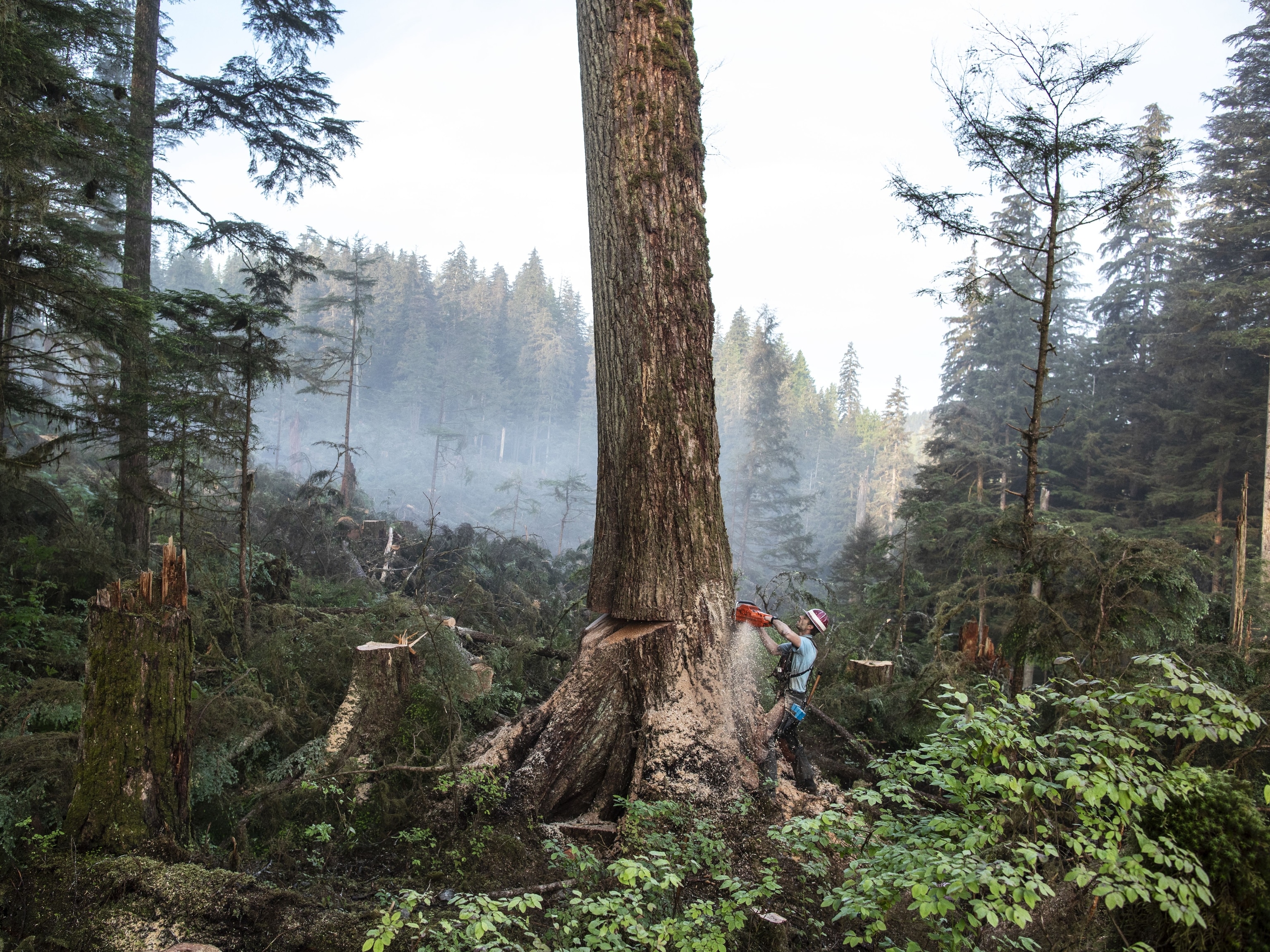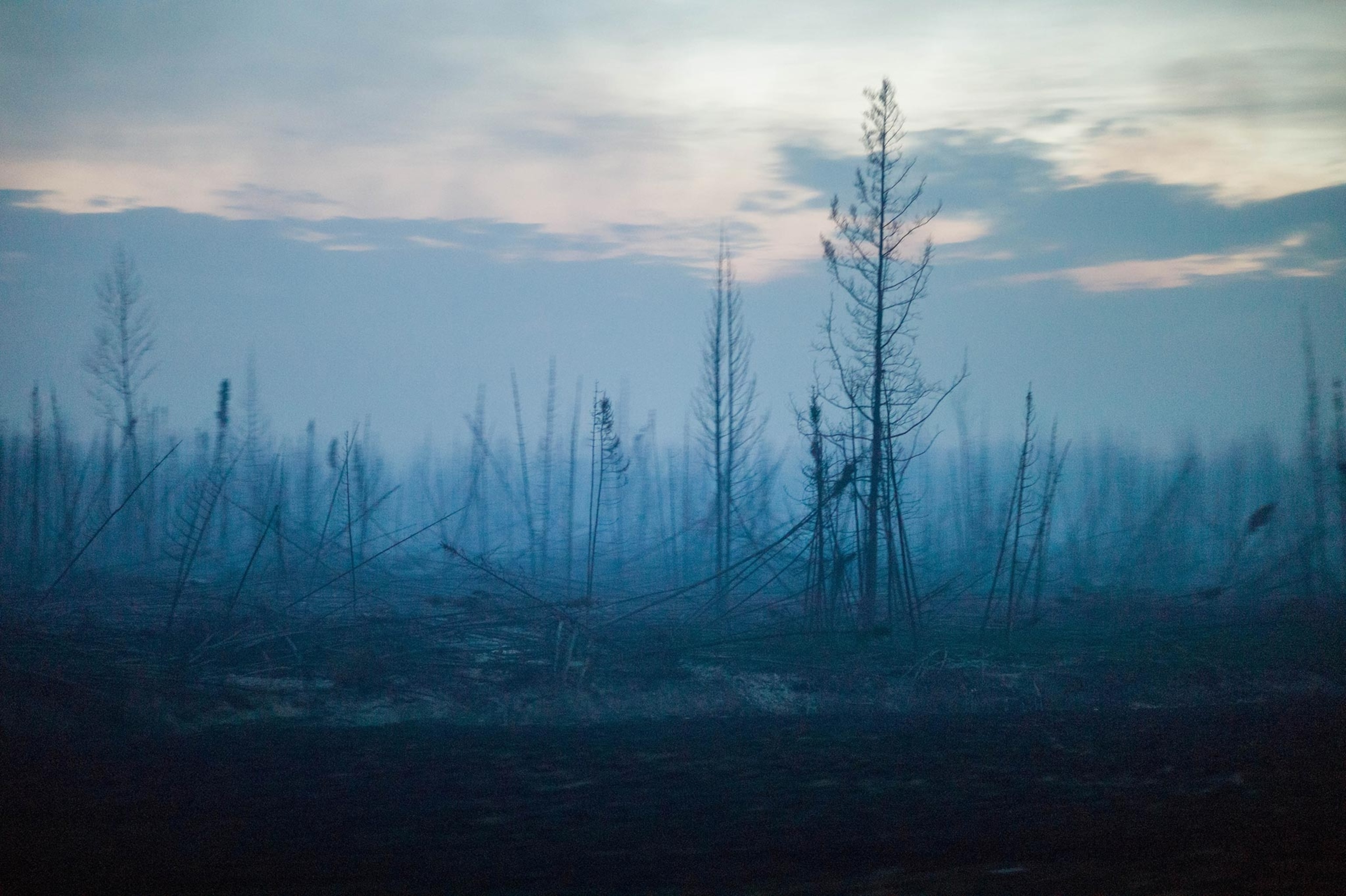
Tree-planting programs can do more harm than good
Conventional wisdom holds that all tree planting is good for fighting climate change and supporting wildlife, but research shows some techniques can be a problem.
Imagine a black hole in the center of a green donut, Malcolm North said.
A USDA forest ecologist in the Sierra Nevada of eastern California, North was at the center of a new experiment in forestry with global implications. In September 2014, the King Fire ripped through 150 square miles (390 square kilometer) of the Eldorado National Forest. North was part of a team of scientists studying new ways to bring the forest back.
That put him at the center of one of the hottest new fields of climate adaptation—and a quiet revolution in his own field. Throughout the 20th Century, the Forest Service grew trees by, well, planting them. “We’d go out to a big fire or clear cut,” North said, of his college summers working as a tree planter, “and every ten to twelve feet we’d plant another pine tree. At the end it would look just like a corn crop.”
They called it “pines in lines,” and over the last century it became industry standard as the Forest Service replanted the native mixed-species forests of Western conifers with trees for commercial harvest.
But that method—relying not only on armies of sowers but also foresters who come back, years later, to “clean up the mess”—has become prohibitively expensive for a Forest Service facing the intersection of a more volatile climate with flat funding.
“Forest Service spending on fire suppression has gone from 15 percent of the budget to 55 percent,” Agriculture Secretary Sonny Perdue said in 2017. “That means we have to keep borrowing from funds that are intended for forest management.”
So the hunt is on for ways that tomorrow’s forests can better care for themselves. In January, North was part of a team of 25 University of California and Forest Service ecologists and siliviculturalists arguing for a new model of forestry that would replace the old straight-line monocultures with new methods emphasizing variety of both spacing and species. Evidence in support of this new model comes not just from California but from China, the Amazon, Europe, and elsewhere. It’s a more natural way of doing forestry, and one that also puts these experts on the front lines of a pivotal struggle to slow climate change.
The Eldorado is one case study in what the World Resources Institute (WRI) calls “degraded lands:” part of an estimated 2 billion hectares—a land area about the size of Australia, as shown on this interactive map—ready for restoration.
Restoration is a term-of-art that, after nearly two centuries of industrial deforestation, often means new forests. Trees are about a quarter carbon, and as they grow (or burn) they bind (or release) about four times their weight in carbon dioxide. For all the hype around carbon-capturing machines, says Mary Booth, an ecologist at the Massachusetts-based Partnership for Policy Integrity, when it comes to drawing down carbon, “forests are the only proven, scalable technology we have.”
Yet at the heart of North and company’s work is a disquieting fact: the wrong reforestation policies can be worse than no reforestation at all.
“The consequences of getting it wrong can be really destructive,” he said. The example of Eldorado raises real cautions about the value of a top-down approach and suggests that the path to a healthier global forest may be preparing the ground, acknowledging our limitations—and then getting out of the way.
The promise of reforestation
For the last decade, the once-denuded slopes of Pakistan’s Hindu Kush, once the haunt of timber smugglers and illegal loggers, have been refilling with trees. Last April, Pakistan announced the completion of its “Billion Tree Tsunami,” which converted 350,000 hectares of degraded and deforested land—about the size of Taiwan—into “restoration areas” where land and forest could recover.
The country’s environmentalists are now pushing for ten billion trees, but Pakistan is already the first to meet its commitments under the Bonn Challenge, under which dozens of countries committed to halt the loss of their natural forest and begin restoring degraded cropland and forest.
Bonn signatories are halfway to their pledge goal of 350 million hectares of forests and croplands—an area larger than India—by 2030; if those areas are regrown, the organization estimates, it could harbor 15 gigatons of CO2, about half the current annual fuel emissions.
Far more sequestration is possible. The Nature Conservancy estimates that “natural climate solutions,” like restoring degraded soils, safeguarding wetlands, and planting new forests, could account for almost 40 percent of the carbon savings needed to keep the world on the 2-degree Celsius path generally seen as necessary to keep climate chaos to survivable levels.
Large swaths of the globe are already greening. India, which has begun restoring almost ten million hectares—37,000 square miles, is, along with China, part of what a recent Nature Sustainability paper called a “strikingly prominent” pattern of greening. In both of those countries, new land-use practices, bolstered by rising levels of atmospheric CO2, have brought huge increases in the area covered by vegetation.
China alone has accounted for 25 percent of the global increase in vegetation area since 2000, about half of which is from increase in forests. (In India, it’s almost entirely an increase in croplands.)
In a sense, this is par for a global course: part of “The Forest Transition,” an epochal shift as trees return to long-cleared lands. In Spain, trees recolonize abandoned farmland. In Latin America and the Caribbean, long watchwords for deforestation, a sweeping Global Environmental Change study found that “reforestation hotspots,” areas of expanding forests, covered about ten percent of the continent, including areas all but given up for lost, like Brazil’s Atlantic Rainforest. Between 2000 and 2014, Latin America added about 64,000 square miles (167,000 square kilometers) in forests, about the size of Syria.
But while more forests sound a like a good thing, the example of North America suggests that reforestation can be a two-edged sword, undoing exactly the problem it is set up to solve.
The pitfalls of too many trees
In April 2016, an enormous wildfire nearly wiped out the Canadian oil town of Fort McMurray, destroying 2,400 houses and forcing almost a hundred thousand people from their homes.
It was the costliest natural disaster in Canadian history, and after the embers had cooled—along with the familiar arguments around the role of climate change—a team of Canadian eco-hydrologists went into the burnt-out forest to solve a mystery. The Fort McMurray wildfires had begun in peat swamps along the Horse River, a wet forest where native trees sported scarves of water-dense, flame-retarding peat moss.
True, climate and weather conditions had been unusually ripe for a fire—but how had a swamp burned with such severity? The team’s disquieting conclusion: the cause of the blaze, and the massive amounts of carbon dioxide it had released into the air, lay in a botched campaign of government-driven forest growth.
In the 1980s, as part of an experiment in converting bogs to timber-producing forests, the Canadian government drained large areas of the Alberta swamps and planted black spruce, carefully spaced for maximum growth.
The new spruce trees gorged themselves on the groundwater out of the swamps, growing unusually wide canopies—which choked out the peat moss. A different, drier moss replaced it—kindling in the place of fire retardant—and as the land dried the trees grew into enormous stores of fuel.
The land “surpassed an ecohydrological tipping point,” the team wrote, creating a positive feedback loop. As the spruce trees grew, binding carbon from the atmosphere, they pulled up more water, which let them grow ever bigger—which let them pull more water, and the cycle continued.
When the fire came, all that stored carbon went right back into the atmosphere: in growing trees, the McMaster team found, Alberta had inadvertently turned a carbon sink into a carbon emitter.
The Fort McMurray fires were far from the only example of how large-scale tree planting can have the opposite effects intended. Last year, a group of Chinese groundwater ecologists reviewed the results of one of the aggressive campaigns of afforestation—the process of growing forests where they had not been before—that has helped China lead the world in forest growth.
Since 1952, the Politburo, like its opposite numbers in Ottawa and Washington D.C., has presided over aggressive tree planting on the country’s arid fringes: in this case, the far north, where desertification threatens.
But in doing so, the Chinese researchers found, foresters planted huge tracts of thirsty nonnative trees, that, the ecologists found, had sucked up the groundwater as they grew, dropping the water table to dangerous levels. This suggested that China’s impressive-on-paper forest growth could be preparing the country for a greater disaster in the future.
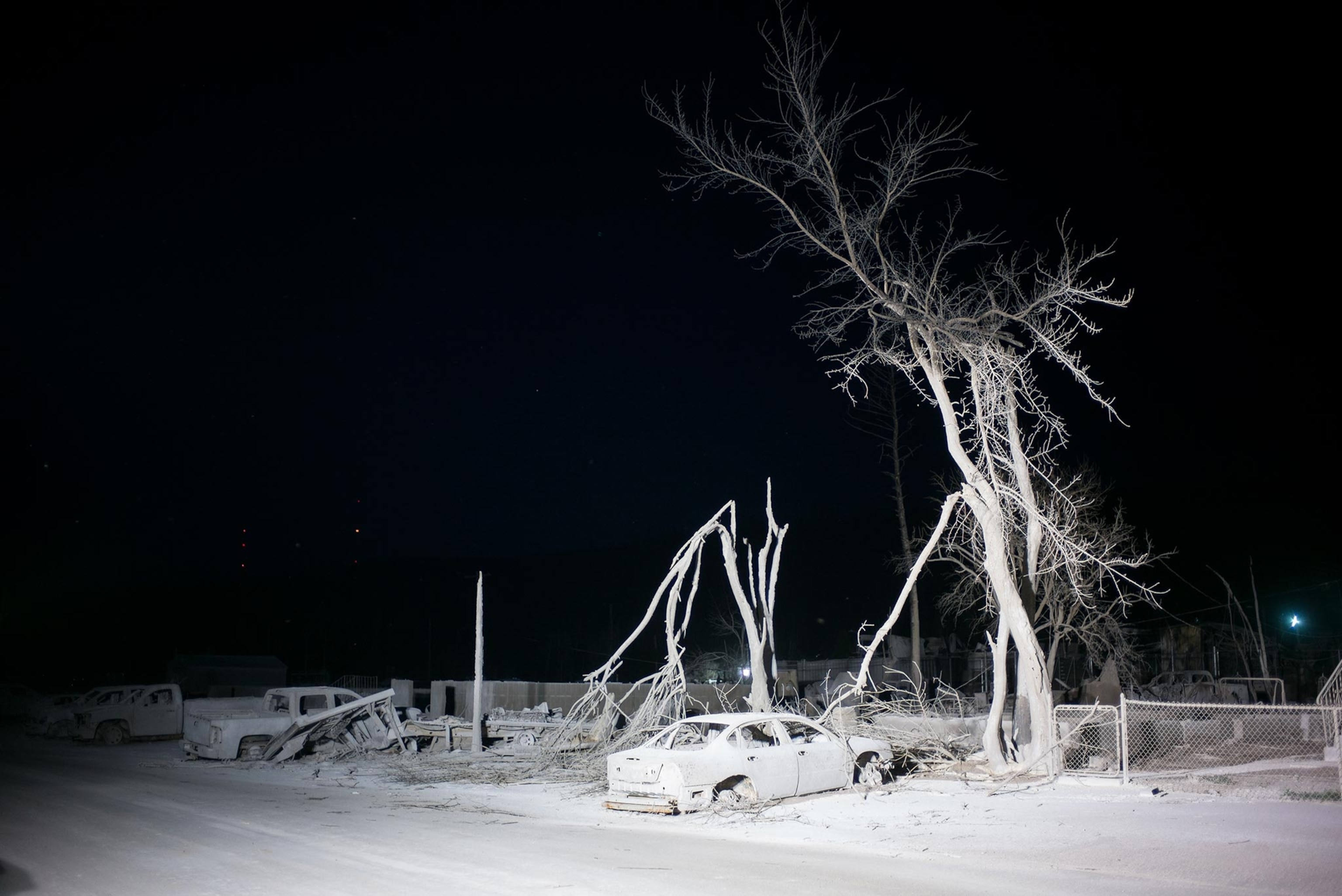
“The afforestation program must be urgently reassessed,” they wrote, with future species selected for drought tolerance and ability to subsist on little water. The legacy of a management regime that optimized for one metric—number of trees to hold back the desert or maximum production for lumber—had laden the future with perverse consequences.
One size does not fit all
USDA scientist North faces the impacts of a similar policy in California. The “pines in lines” method became standard practice not because it's the best way to grow a healthy or biodiverse forest—though the older generation of foresters will go to the mat defending it—but because, North said, “it grows the fastest board feet possible” to end up in houses and buildings.
At 12-foot increments, the fast-growing, straight ponderosa pines the Forest Service plants out west are perfectly optimized to get as big as possible, while still remaining close enough for their canopies to shade out competing trees and shrubs.
But by growing big, they also mine groundwater from a dry region—and when wildfire comes, those 12-foot increments are just right for it to race along.
“Pine plantations are notoriously, incredibly flammable until they’re 60 to 80 years old,” North said. Till they’re big enough for their crowns to be out of reach of flames, “if a fire goes through a 12x12 pine plantation it just gets vaporized. The trees go up like matchsticks.”
To Sofia Faruqi, a forest economist with WRI, California’s pine monocultures are a case study in the problems with a one-size-fits-all approach to forestry.
“If you take the perspective that no matter what, more trees are better, that’s going to have unintended consequences,” she said. Restoration policy can no longer fail to address what kind of trees are being planted, or how it jibes with the larger health of the forest, the amount of water available, or the needs of local people. “In the case of the West Coast, restoration may mean removing trees from the landscape.”
Faruqi’s point was not that we should slow a rush toward growing forests—WRI’s position is that the need for rapid reforestation is urgent—or even that that arid or marginal lands can’t be targets for afforestation. A lot of studies, like this recent one from a team at the Weizman Institute of Science, have found that trees in arid lands can increase rainfall beyond what they take up; the Weizman researchers estimated that 10 percent of the global afforestation potential is in arid lands.
Perverse incentives
But forests are complex and intricately adapted to the land they grow on. The tools for managing them, by contrast, are often simple and counterproductive, mandated by faraway bureaucrats—or by economic systems—that fail to account for the role of healthy ecosystems on the productive capacity of the land that the economy rests on.
That places a number of institutional hurdles in the path of effective reforestation. Numerous ecological economics studies have tried to track the value of reforestation: a Restoration Ecology study estimated the value of full international commitment on the Bonn Challenge at as much as $9 trillion in benefits; meanwhile, an Ecological Economics study found that impaired ecosystems cost world agriculture $6.3 trillion a year.
“Research in Latin America and Africa shows that every dollar you spend on restoration means $7 to $30 in benefits,” Farqui said. “But that doesn’t make it into financial models or public decision-making, and policymakers often leave the people most affected out of the room.
“Instead, we’re subsidizing things like logging and agriculture that lead to forests being cut, and not subsidizing the forests that are being lost.”
That sentence conjures up images of soy plantations marching into the Amazon, but it’s a problem in North America as well. North Carolina, home of some of the most bio-diverse forests in the continental United States, gives landowners property tax breaks to sell their forests for logging—but not to conserve them.
The impact, notes Adam Colette of the Dogwood Alliance, a local land rights organization, is that as the world is recognizing the carbon-storing power of standing forests, if North Carolinians want to keep their forests, the tax code requires them to pay for the privilege.
“We’re not even at the point of arguing for incentivizing forests,” he said. “We’re just fighting to make it an even playing field.”
Is diversity the solution?
To Faruqi, the solution to the policy problem and the financial problem are linked: national governments should do what they have for the solar or wind industry: subsidize, and let private industry and individual actors do the rest.
One thing that would unlock a rush of capital almost immediately, she argues, is a price on carbon, which would signal to the financial system that forests have a value beyond their lumber.
“Carbon,” she noted, “is also much easier to account for than things like biodiversity or erosion control.”
A carbon price could help align market incentives with ecological and social ones. Still, a core danger looms over the commitments made at Bonn: the trouble with metrics, wrote social scientist Donald Campbell, is that they have a tendency to become ends in themselves, shifted by actors with their own goals until they “distort and corrupt the social processes [they are] intended to monitor.”
The main danger of Bonn, said Crystal Davis, who studies forest governance for WRI, “is that ‘restoration’ happens in ways that aren’t good for environment or the forests.” The history of the American West suggests that millions of acres of trees, in and of themselves, will not necessarily pose a long-term climate solution, especially if the policies for planting them are established by faraway national governments.
“You can really only determine what the best approach to restoration is at the local level, by factoring in local considerations and local needs,” Davis said.
On the ground, where people live off the land or use forest products, the value of a healthy ecosystem isn’t abstract or metrics-driven—particularly in Africa, where two thirds of the population still works as farmers.
Last year, WRI held a Land Accelerator in Africa for local startups focused on restoration. Some 245 applicants competed for about a dozen spots: winners focused on businesses like growing cashew trees on degraded cropland; raising quick-growing bamboo for the fiber market; or producing organic fertilizers that are affordable for African farmers.
That’s part of a larger trend in which locals, given the capacity, work to restore their own lands. In Ethiopia, for example, groups of volunteer farmers have carried out mass improvements to the landscape that have turned the countryside green, outstripping the effects of climate change; a 2016 report by the UN Food and Agriculture organization found that community forestry, while imperfect, is a powerful means of growing and keeping resilient forests.
“Overall,” the report found, “communities and smallholders have demonstrated in a wide range of settings that they are able and willing to manage forests sustainably.”
But, the FAO found, community initiatives needed more support and capacity; the trouble in all this, WRI’s Davis lamented, is that there simply isn’t enough money available for local initiatives.
The founder stand
When they go out to begin replanting in the wreckage of the King Fire, North said, they will try a different variety of local initiative: a strategy called Individual-Cluster-Open, or ICO: a mixture of individual trees (which can grow big), clusters of trees (which support each other through their mycorrhizal networks), and open spaces that can fill with shrubs or new species and serve as firebreaks.
Based on Israeli experience with dryland reforestation, they also advocate that USDA foresters mix in a variety of species, rather than just the quickest growing pines, catering the species they plant to local microclimates: an approach more like a vast, variegated garden than traditional monolithic silviculture.
And in response to the funding squeeze, they’ll do something even more extraordinary: when they go back in to the “green donut,” the USDA will likely leave most of it unplanted. They will leave the inner edges of the burned lands alone to slowly fill in with natural seedlings; picking only the most promising microclimates to try the ICO method.
And on the steepest terrain, they will use a method, borrowed from Latin America, that North described as almost heretical to American forestry: the “founder stand,” in which a small grove is planted and left to grow and seed, over time, an entire hillside.
This raises an important, often-forgotten characteristic of forests: left to their own devices, they expand. In a recent study, Brazilian ecologists charged with reforesting a cleared forest planted with virulent African cattle grass compared what happened when they cleared the grass and planted trees—versus just clearing the grass.
To their delight, they found tree-planting was unnecessary: five years after harrowing the grass, the tests plots were full of native trees. Future foresters, they wrote in Forest Ecology and Management, should try “first evaluating the potential for natural regeneration and then gradually eliminating barriers."
That may be a valuable lesson for the mission of re-growing the global forest: sometimes it’s less a perspective of taking action than of removing obstacles and getting out of the way.
Soon, perhaps, those founder stands will rise over the burnt hills of Sierra Nevada, releasing their cones to roll downhill and plant new trees, and new ones after them. And if nothing stops them, until they find their natural limit, they will grow, and grow, and grow.


